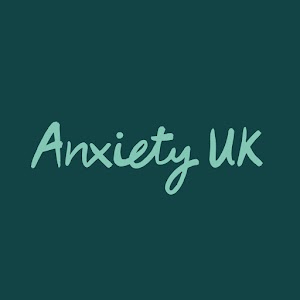Anxiety…it’s more than the stuff that is going on in your mind
by Sue Wood and Chris Williams
Anxiety is common and can be disabling. This blog will give you some insight into common physical symptoms of anxiety, help you understand why the symptoms occur and most importantly, what you can do to make the symptoms more manageable and able to lead a better life.
Physical symptoms and anxiety
We all experience physical symptoms of anxiety, for example when going for a job interview or before a bungee jump, you notice symptoms such as a knot in your stomach, sweaty palms or a rapid heartbeat and breathing. They occur when we are scared or excited and usually subside after the interview or once you have your feet back on solid ground.
In this blog we focus on the symptoms that can last for hours, days, weeks, months or even longer and have a significant unhelpful impact on your daily life and often present as repeated patterns.
It’s different for everyone…what is it like for you?
Many symptoms of anxiety are familiar, often noticing the same patterns of anxiety whenever we feel tense. Perhaps experiencing tension headaches, eye strain, tummy or chest pain, or a feeling of butterflies in our stomach or sickness? The mental tension leading to physical tension is exhausting. It can also prevent relaxing into sleep, tossing and turning at night, unable to settle. Sometimes anxiety affects our appetite – a reduced appetite or feeling hungrier, and comfort eating.
Anxiety at higher levels can trigger the so-called fight or flight adrenaline response, where our heart and breathing rates increase. This prepares our body to respond to threats and survive by either fight or flight.
Physical symptoms linked to higher levels of fear can appear when we face something specific we are scared of such as a wasp, a height, or being under social scrutiny (called a phobia). However sometimes panic occurs suddenly out of the blue with physical changes so severe that it feels like you are having a heart attack or will suffocate or collapse. Fears are reinforced and underlined by the increased heart rate/palpitation, sweating, feeling hot or clammy…feeling sick…shaking…difficulty breathing…dizziness.
Sometimes in panic the symptoms can make you feel as if you need the toilet urgently (urine or bowels), or cause diarrhoea. This can reinforce fears of incontinence. Other common physical changes can be feeling of sick/nausea, a dry mouth, or feeling as if you are going to choke.
We are all individuals, so whether the physical symptoms are milder or more severe depends on our reactions and experiences of anxiety. A key maintaining element however is that we often feel worse, stop what we are doing, and hurry away.
But the good news is…. you can make some small changes that can help you to feel better
First is checking with your doctor or other health care practitioner that the problem really is worry or panic. That’s because sometimes physical health problems such as diabetes or thyroid problems cause anxiety as well as bodily changes.
Try one of these first steps to self-manage your anxiety
- Reduce your caffeine intake
- Take regular exercise
- Get enough sleep
- Practice breathing exercises, yoga, or mindfulness
- Eat regular healthy meals
- Reduce alcohol/illegal substance use
- Attend a support group
- Practice self-care
If you are struggling, why not try just one thing and ‘have a go’. If you want to practice yoga…you don’t have to sign up to a course of expensive classes. Spend even just five or ten minutes a day, perhaps guided by an app or online resource, in a yoga pose or practicing yoga breathing.
Finally, if the anxiety persists, is severe or worsens, there are some very effective, evidence-based, and widely recommended treatments available. See your GP or refer yourself for treatment, options include Talking Therapies, medication, and mindfulness.
Anxiety UK also offer CBT and other forms of talking therapy, more details here
If you would like to write a blog for AUK please email [email protected] for more information.






